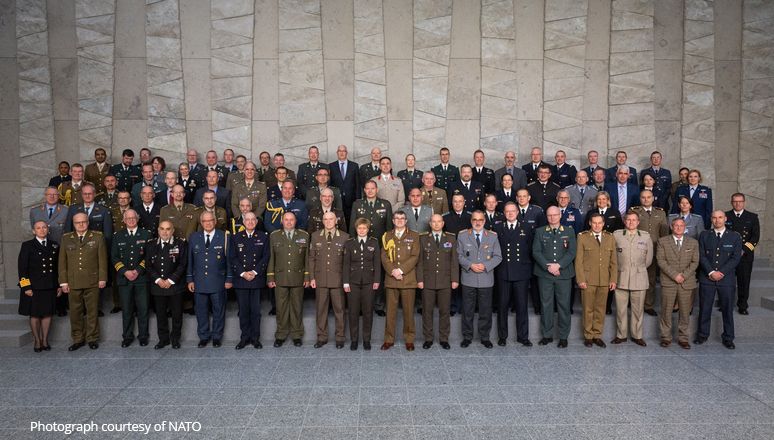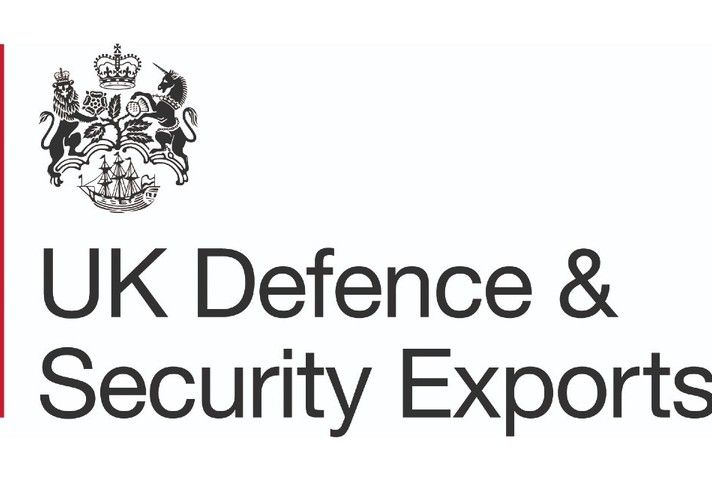
Russia’s illegal war of aggression against Ukraine shattered peace in the Euro-Atlantic area and has generated casualties, both military and civilian, on a scale not seen since World War 2. In NATO, it is the Committee of the Chiefs of Military Medical Services’ mission to preserve and restore the health and fighting strength of Allied and National military forces at home and on deployment.
Thirty-one Surgeon Generals from Allied nations make up the Committee, alongside three medical advisors from NATO’s military command structure. Established in 1993, COMEDS came into being when the need for the coordination of medical support in peacekeeping, disaster relief and humanitarian operations became essential. While medical support remains primarily a national responsibility, COMEDS acts as the coordinating body, on behalf of the Military Committee, for all military medical concepts, policies, doctrine, procedures, techniques, programmes and initiatives. COMEDS supports NATO’s Defence Planning Process by advising on military medical capability requirements and by driving interoperability through 80 medical standardisation agreements.
Whether in crisis or peace, COMEDS provides timely, relevant and coordinated military medical advice. This is achieved through COMEDS’ ability to leverage engagement from the international military medical community and its extensive network of Partner Nations and Observer Organisations. Through its core plenary sessions it receives expert advice from twenty-four specialist Working Groups and subsidiary Panels. The Working Groups cover the entire spectrum of military medical support, from Force Health Protection to Health Information Systems and Technology. By planning for future threats and challenges, looking to mitigate any risks and gaps, the Committee’s work enables both NATO and national commanders’ freedom to operate. As military health services are often required when the response will be most difficult and least coordinated, COMEDS ensures Allied and National military medical support evolves to meet the threats and challenges of the future.
CHALLENGES IN THE MILITARY MEDICINE DOMAIN
Following Russia's illegal annexation of Crimea in 2014 and the rise of security challenges from the South, including attacks by ISIL and other terrorist groups across several continents, NATO implemented the biggest increase in collective defence since the Cold War. In order to prepare for the fact that conflict can present itself at any time, the Alliance developed three key military strategies. In 2019, the NATO Military Strategy was approved to serve as an overarching strategy for Commanders. Two further concepts followed—the Concept for the Deterrence and Defence of the Euro-Atlantic Area in 2020 (DDA), which focuses on the warfighting of today; and the NATO Warfighting Capstone Concept in 2021 (NWCC), which focuses on the warfighting of the future, with a 20-year horizon outlook. NATO’s recent Summit in Vilnius, Lithuania saw Allied Heads of State and Government agree the most detailed and robust defence plans since the Cold War, the ‘Regional Plans’. These geographically-specific plans describe how NATO will defend key and relevant places in the Alliance against the two threats described in NATO’s Strategic Concept and the NATO Military Strategy: Russia and Terrorist Groups.
For COMEDS, these two threats present clinical, operational, and strategic challenges, requiring existing military medical models to be refocused and tailored to meet the demands of warfighting at scale. Through ongoing support to Ukraine in the medical domain, and in close cooperation with Ukraine’s Surgeon General, COMEDS has identified a number of key medical lessons that must be addressed:
- Medical workforce. One of the greatest challenges for warfighting at scale is sufficient numbers of healthcare workers. There is a global shortage of healthcare professionals, which has only been exacerbated by the COVID-19 pandemic. Whilst many NATO nations rely upon medical reservists these personnel are recognised to have “dual use” and are normally employed in national civilian medical facilities. In times of crisis, there will be difficult national decisions regarding the effective balance to meet dual demands across both civilian and military medical services. Additionally, sustained high numbers of casualties in war will impact both the quantity and quality of care that can be delivered, when medical services are stretched beyond capacity. A prospect of warfighting requires Nations to consider workforce solutions where military healthcare worker positions have been civilianised, de-enriched or deleted.
- Under-investment. Recurrent disinvestment in military medical capabilities, in a sinusoidal pattern known as the “Walker Dip”, is most acute during the period between major conflicts. Re-investment historically only occurs just before another military campaign begins. This pattern has been observed for a number of years, creating capability gaps in the military medical domain. Nations have now begun to reinvest, in light of the war in Ukraine, but it takes time to rebuild specialist capabilities and to generate scale.
- Civilian and military casualty distribution across Europe. Contemporary models have managed small numbers of critical casualties transported to a specified hospital by air. When warfighting at scale reversionary means of mass medical evacuation, such as by rail and sea, will likely be needed to provide sufficient capacity. Hospital trains could move large numbers of casualties over long distances, whilst offering effective treatment. This has already been exploited in Ukraine, where over 60% of casualties have been moved east to west by rail. Effective coordination between military and civilian authorities will be a pre-requisite for effective transnational casualty redistribution.
- The flagrant abuse of International Humanitarian Law and the Law of Armed Conflict. In Ukraine, everything and everybody have been targets including medical treatment facilities, transport and healthcare workers. The principles of the Geneva Convention and the emblem of the Red Cross are no longer providing any realistic protection. To protect medical personnel, patients and morale, current tactics will need to change. Hard cover, camouflage, deception and dispersion of medical facilities may all be required, alongside the centrality of armoured ground medical evacuation (MEDEVAC) assets.
- Civil-military cooperation. This is the cornerstone of success in the management of large numbers of casualties in war. In home nations, injured service personnel will overwhelm existing dedicated military hospital capacity and civilian hospitals will be required for additional capacity. For those Allies who no longer have dedicated military hospitals, including the United Kingdom, there is an absolute reliance on the civilian healthcare system for definitive care. In a war on Allied soil, the nation’s civilian population will generate parallel demands for emergency “war surgery” care. A practical solution is “a whole of government approach”, with joint planning for how to use civilian and military treatment facilities to create capacity, ensure optimal coordination, and encourage clinical practice standardisation.
- Medical logistics. The COVID-19 pandemic highlighted that medical supplies, such as Personal Protective Equipment (PPE), were often procured and supplied from a common source. With excessive demand by multiple nations on the same supply chain, or if the supply chain is contested or disrupted by war, key shortages would predictably occur. Two solutions can mitigate risk. The first is for critical equipment and supplies to be manufactured within an Allied country, creating an ‘on-shore’ or ‘sovereign’ capability. The second is to hold more stock, potentially on a rotational basis to maximise cost efficiency.
To address these challenges and re-orientate the ‘medical mind set’ to deal with large-scale operations across the Alliance, the NATO Medical Support Capstone Concept was approved in October 2022. The first of its kind, the concept focuses on a ‘cross government’ whole of sector approach for future medical support, with the key precepts of effective civil-military cooperation and strengthened partnerships.
COOPERATION WITH INDUSTRY
The greatest threat to a casualty in war is time. Time to first aid, time to life-saving intervention and time to definitive care. Having the right equipment and infrastructure in place at the outset of crisis or conflict, and sustaining this, is genuinely ‘battle-winning’ from the perspective of delivering safe and effective healthcare. Cooperation with industry is critical from the development of new products through to procurement and timely delivery.
Procurement processes are traditionally time consuming. This is where the NATO Support and Procurement Agency (NSPA) can support Allied and national military medical services to enhance agility and resilience. NSPA is NATO’s dedicated agency to provide cost-efficient multinational procurement solutions. Through its Medical Support Partnership, NSPA can focus medical support demands from its participating nations to aggregate a list of priority capabilities for national or multi-national procurement. Standardisation agreements, developed by COMEDS, underpin the interoperability of the equipment solutions. NSPA establishes assured, pre-authorised procurement contracts with specialist civilian companies, to support procurement at a speed of relevance during crisis.
The war in Ukraine has demonstrated the synergy of commercial and military capabilities and separately the use of emerging and disruptive technology. The Defence and Security Equipment International (DSEI)’s Medical Hub gives practical examples of industry at the forefront of military medicine, demonstrating medical capabilities that can be exploited in both military and civil contingency operations. DSEI 2023 is facilitating COMEDS’ work by informing senior medical and non-medical stakeholders of innovation in medical equipment and materiel that will reduce risk on current and future operations: with the COMEDS Plenary session taking place within DESI, there is an exceptional opportunity for integration with industry.
In the event of war, and when the threat of large numbers of casualties becomes existential, military medical services have a central role to play in maximising deployability, sustaining the fighting force, and supporting the moral component of fighting power through timely and effective treatment. COMEDS’ work ensures that NATO and its member countries are medically prepared, effectively equipped, functionally interoperable and adaptive to emerging clinical trends.
Secured your ticket for DSEI 2023?
-
Latest Defence and Security Capabilities set to be on Display in London as DSEI 2023 Begins
12 Sep 2023Defence and Security Equipment International 2023 (DSEI) opened its doors Tuesday 12th September. DSEI 2023 and DSEI Connect will together host some 1,500 defence and security suppliers – including al ... -
Unlocking the Defence Workforce Ecosystem
05 Sep 2023The UK MOD is facing unprecedented challenges in attracting, growing, and retaining the skills it needs to deliver its mission. The new systems and technologies that the UK is fielding add to this cha ... -
KEY POINTS Rapid modernisation, innovation and technical development is needed for the UK to meet it’s twin priorities of protecting European allies, and stability in the Indo-Pacific. Using innovatio ...
-
DSEI 2023: Royal Navy To Set Up In Receive Mode, To Support Partnering Against Future Threats
04 Sep 2023 Dr Lee WillettThe UK Royal Navy (RN) will have significant presence at the DSEI 2023 exhibition, which is taking place at ExCeL London on 12-15 September. It is also seeking to grasp the engagement opportunity that ... -
Agile Acquisition & Rapid Delivery in Defence – Resilient Teams Harnessing Digital Means
04 Sep 2023“Technology is an extension of human behaviour” – a quote attributed variously, but traceable to the Canadian philosopher, Herbert Marshall McLuhan. Whilst originally referencing the study of media, t ... -
“Nobody ever stops or intervenes in a poor project soon enough. The temptation is always to ignore or under-report warning signs and give more time for things to improve to avoid revealing bad news, r ...

-038.jpg/fit-in/500x500/filters:no_upscale())
)
)
)
)
)

